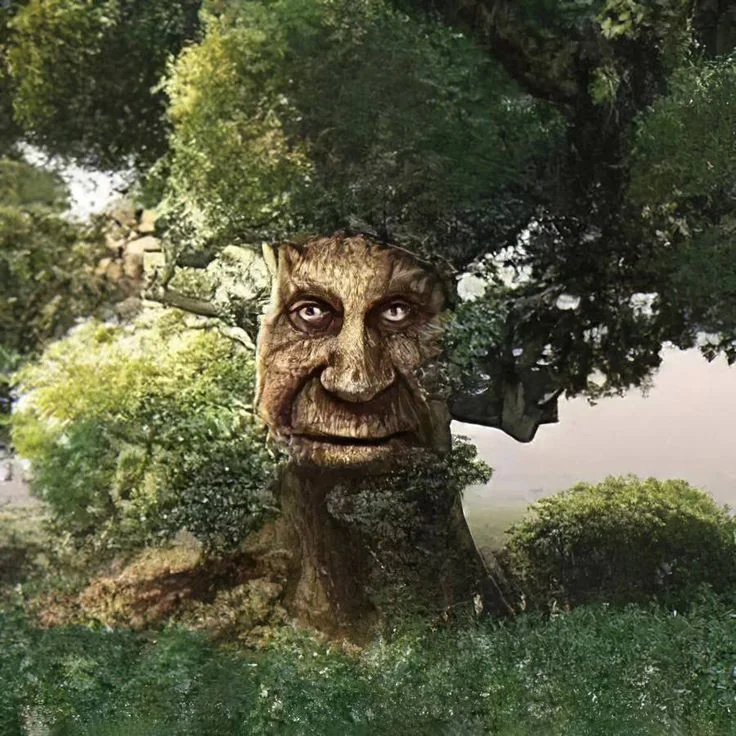Introduction:
In the vast tapestry of human folklore, few symbols hold as much eerie allure as the image of a cursed tree. From ancient myths to modern horror tales, these spectral arboreal entities have captured the imagination of storytellers and artists alike. But what is it about these twisted, gnarled forms that continue to fascinate and unsettle us? In this exploration, we delve into the depths of cursed tree imagery, unraveling its symbolism, its cultural significance, and the primal fears it evokes.
The Symbolism of Cursed Trees:
Cursed trees, often depicted as twisted, barren, or haunted, serve as potent symbols in various cultural contexts. In many mythologies, trees are revered as sacred symbols of life, wisdom, and the connection between the earthly and spiritual realms. However, when a tree becomes cursed, it subverts this symbolism, embodying decay, malevolence, and the disruption of natural order.
One of the most iconic examples of the cursed tree motif is the Yggdrasil of Norse mythology. Though not inherently cursed, this cosmic tree that binds the nine worlds is threatened by various forces of chaos, embodying the precarious balance between order and chaos. Similarly, the biblical Tree of Knowledge in the Garden of Eden represents humanity’s fall from grace and the consequences of disobedience, casting a shadow of sin and damnation.
Across cultures, cursed trees often serve as harbingers of doom or as markers of supernatural boundaries. The gnarled branches of the Whomping Willow in J.K. Rowling’s Harry Potter series, for instance, guard the entrance to the forbidden grounds of Hogwarts School of Witchcraft and Wizardry, embodying both protection and peril.
Cultural Significance and Folklore:
Cursed trees have long been woven into the fabric of folklore, where they feature prominently in tales of haunting and tragedy. In European folklore, the concept of the “hangman’s tree” persists—a tree used for executions whose malevolent aura lingers long after its grisly purpose has been served. These trees are said to harbor the restless spirits of the condemned, casting a pall of fear over the surrounding landscape.
In Japanese mythology, the yōkai, known as the jubokko, is said to be a vampiric tree that feeds on the blood of humans, its branches dripping with crimson ichor. This chilling legend reflects cultural anxieties surrounding the natural world and the dangers that lurk within.
The Ghostly Allure of Cursed Tree Imagery
What is it about cursed tree imagery that continues to captivate and terrify us? Perhaps it is the primal fear of the unknown, embodied in the twisted forms of these spectral sentinels. The juxtaposition of life and death, growth and decay, encapsulates the fragile nature of existence itself, reminding us of our mortality.

Moreover, cursed images often serve as metaphors for the darker aspects of human nature—greed, hubris, and the insatiable thirst for power. In the legend of the Erl-King, a malevolent spirit that lures travelers to their doom, the cursed tree represents the seductive allure of temptation and the perils of succumbing to one’s darkest desires.
In the realm of visual art, cursed tree imagery has inspired countless artists to explore themes of horror, melancholy, and existential dread. From the haunting landscapes of Caspar David Friedrich to the surreal nightmares of Hieronymus Bosch, these artists use the motif of the cursed tree to evoke a sense of unease and disquiet in the viewer.
Conclusion:
In the shadowy realm of myth and legend, cursed trees stand as silent sentinels, bearing witness to the darker aspects of the human experience. Whether as symbols of divine punishment, supernatural guardians, or embodiments of existential dread, these spectral arboreal entities continue to haunt our collective imagination, reminding us of the fragile balance between life and death, order and chaos. In their twisted forms, we glimpse the hidden depths of our own fears and desires, beckoning us to explore the mysteries that lie beyond the veil of the mundane.
